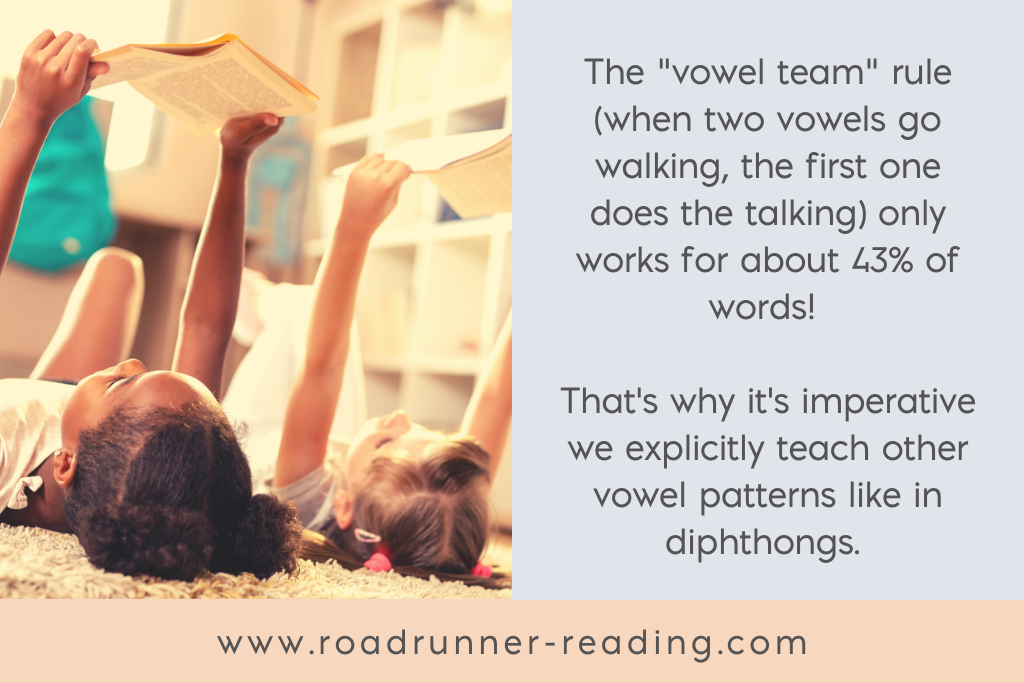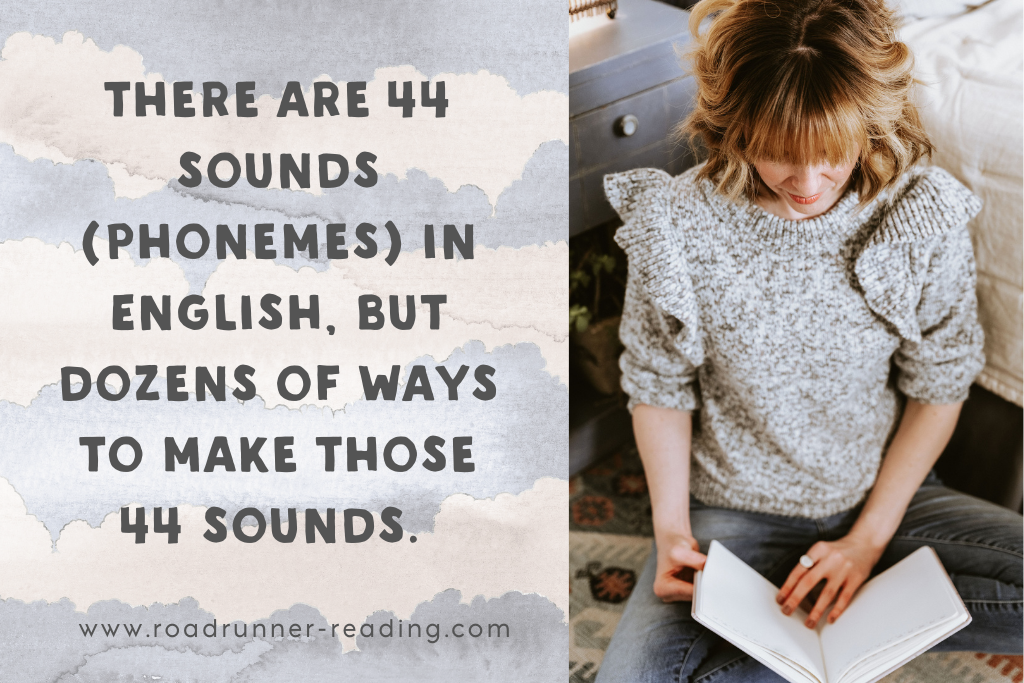I love mnemonics, also known as memory devices. Mnemonics give us little tips and tricks to recall hard-to-remember or tricky concepts. Most of us can probably recognize what ROYGBIV stands for and recall the sequential steps we must take when remembering the phrase — Please Excuse My Dear Aunt Sally. A common mnemonic exists in the phonics world — that of vowel teams.
A common mnemonic is “when two vowels go a-walking, the first one does the talking.” Think about the long vowel sounds in the vowel teams “ai” in rain, the “oa” in boat, or the “ie” in pie. Here’s the thing, though — this “rule” only works about 40% of the time. Ever hear of this fun term — diphthong? A diphthong is two vowels that essentially say two different sounds (or the term targets can be used instead of sounds). Consider the “oi” in spoil, the “ow” in plow, and the “oy” in ploy.

Instead of teaching this cute little jingle to recall vowel teams, I would suggest, instead, teaching the various phoneme (sound)-grapheme (letter) correspondences (also called phonograms). There are 44 phonemes in the English language, but there are dozens of ways to make those 44 sounds. For instance, there are up to ten ways to say the long “a” sound, such as can be found in rain, ray, face, vein, break, and gauge.
Because there are dozen of phonograms, explicit and systematic reading instruction is so crucial. Students have to be directly taught these phonograms to break the code of reading and then encode (spell) correctly. It is a fallacy that kids will simply pick up reading. It’s not like speaking; research has clearly laid out that students need to be taught how to read.
Being able to empower your students through literacy is both exciting and troubling. It’s thrilling because seeing your students make strides in their reading gives them the tools to better access the world around them. On the other hand, there’s a lot at stake if we fail to do so correctly.

Sometimes we need to be pointed in the right direction to best teach our students the tips and tricks to reading. If your school uses a reliable research-based reading program, that’s a great start. If not, I highly recommend seeking out any curriculum based on the Orton-Gillingham approach to reading.
The resources I create and sell in my online store focus on specific phonograms that can provide your students with additional exposure and practice with the various phonics skills you provide in your classroom. Save yourself valuable time and energy by checking out the vowel team resources and diphthong resources available.